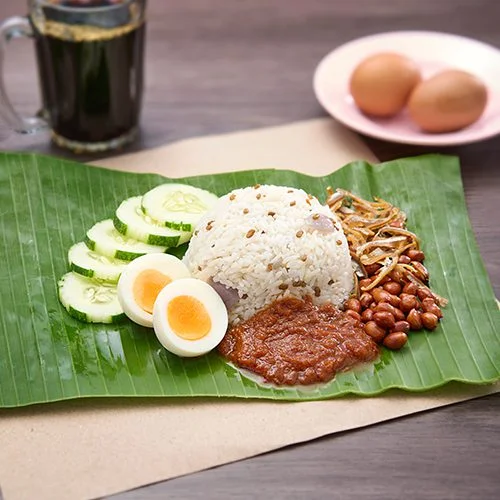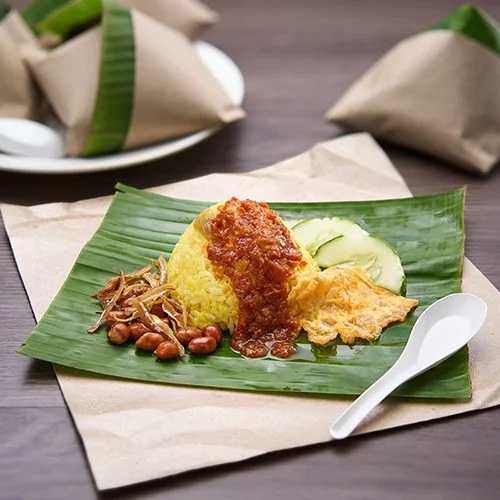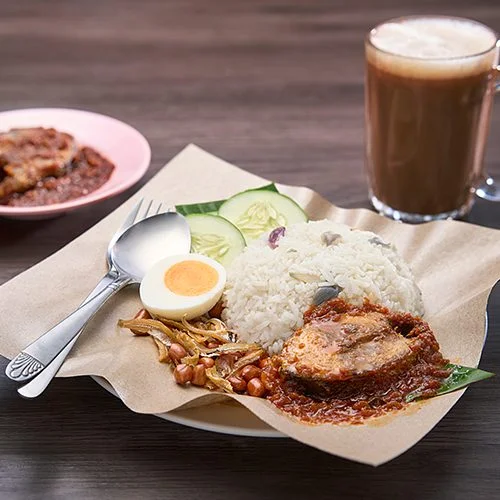THE ORIGIN OF NASI LEMAK
History
Nasi lemak is a dish originating in Malay cuisine that consists of rice cooked in coconut milk and pandan leaf. The name comes from the Malay term for "rice" (nasi) and "creamy-rich" (lemak).
Traditionally, nasi lemak is wrapped and served in banana leaves, together with a hot spicy sauce (sambal) and various garnishes, including fresh cucumber slices, fried anchovies, roasted peanuts, and hard-boiled or fried eggs.
As a more substantial meal, nasi lemak may also be served with an additional protein dish such as fried chicken, cuttlefish sambal, small fried fish, cockles, and beef rendang. Other accompaniments include stir-fried water spinach and acar (spicy pickled vegetable salad).
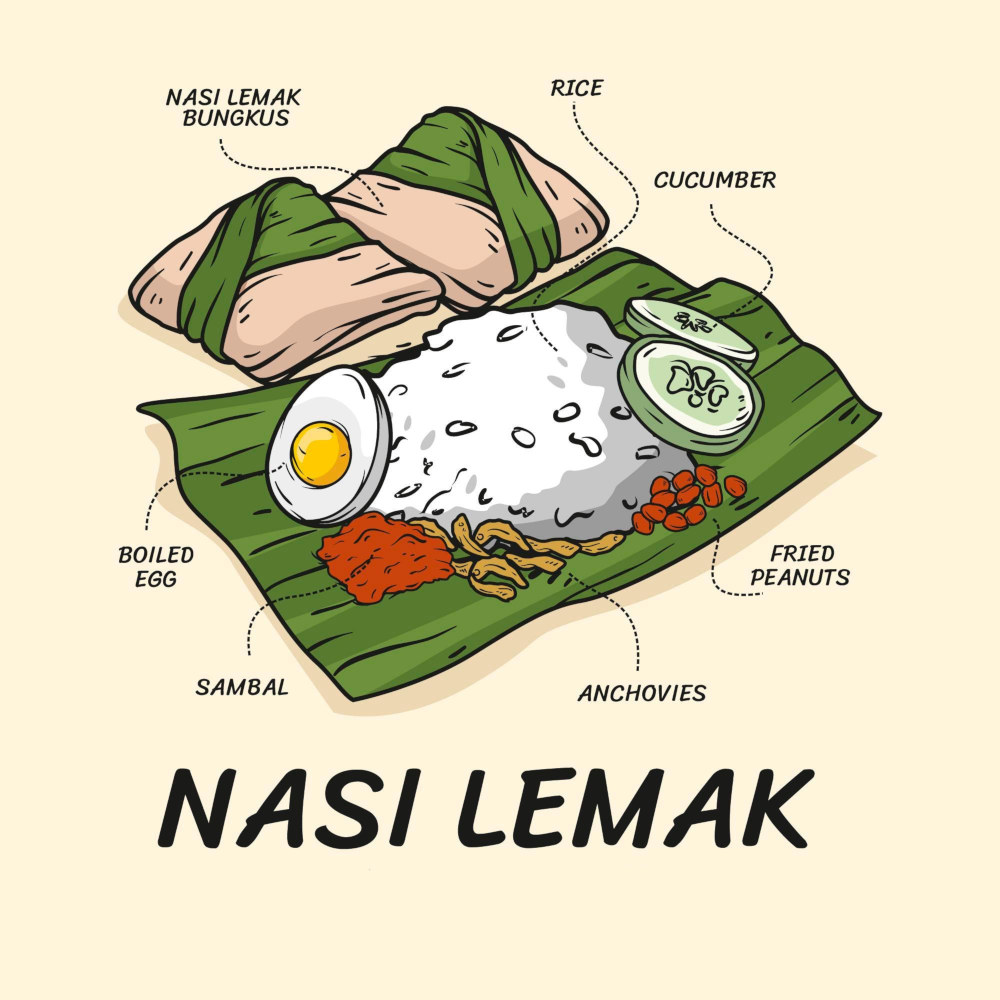
INGREDIENTS
Sambal
Rice
Accompaniments
INSTRUCTIONS
Step 1
Start with the sambal. Remove and discard the stalks from the dried chillies, then roughly
break them up and put in a
small pan of boiling water.
Simmer for 15 minutes, then drain, reserving a little of the cooking water (a teaspoon or
so). Meanwhile, trim and
deseed the fresh chillies and peel and roughly chop the shallots, garlic and ginger.

Step 2
Whizz or pound the soaked dried chillies with their reserved soaking liquid to make a paste, then add the fresh chillies, shallots, garlic and ginger, break down into a puree, then crumble in the belacan.
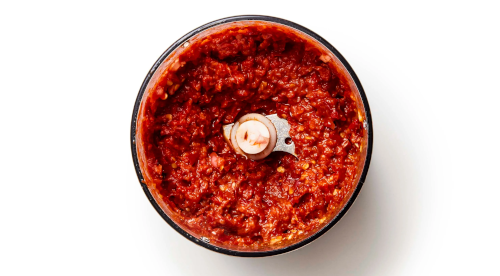
Step 3
Heat the oil in a wok or small pan over a medium heat, add the paste and fry, stirring often
so it doesn't burn, until
the oil separates out; add a little water if it begins to stick.
Stir in a teaspoon of tamarind, a teaspoon of sugar and a good pinch of salt, adjust to
taste, then turn down the heat
and fry, still stirring regularly, until the oil separates again.

Step 4
Rinse the rice, then soak it in cold water for 20 minutes. Drain and put in a medium saucepan with the coconut milk—if there's a big lump of cream on top, save this for later. Add salt and enough water to come up to the first joint of a finger poked in to the top of the rice. Tie the pandan leaves in a knot, so they fit the pot better, then nestle into the rice.

Step 5
Stir well, bring to a simmer, then cover, turn down the heat slightly and leave to cook for 10 minutes. Quickly add the coconut cream, put a clean tea towel on top, cover again and leave for 15 minutes.
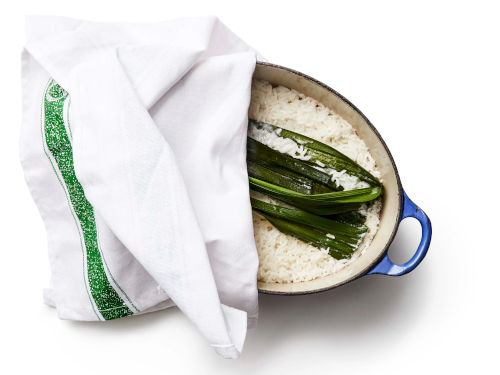
Step 6
Fry the peanuts in a dry pan until you can smell them toasting, then set aside. Heat the oil
in the same pan, fry the
anchovies until crisp and golden, then tip them on to a piece of kitchen paper to
drain.
Boil the eggs for seven to nine minutes, depending on how hard-boiled you like them, then
cool under running water, peel
and halve. Cut the cucumber into thick slices.
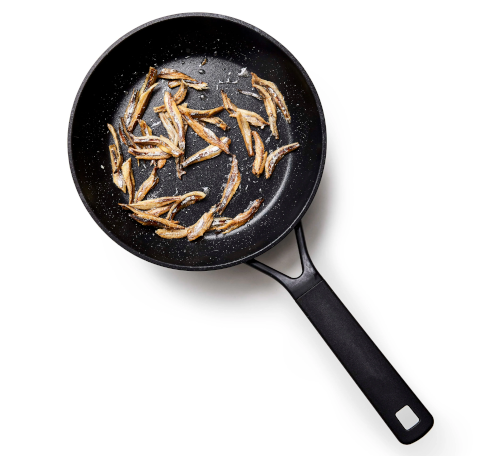
Step 7
To serve, put a mound of rice on each plate, add a spoonful of sambal to the side, then add the peanuts, anchovies, eggs and cucumber alongside. Serve the rest of the sambal on the table for people to help themselves.

